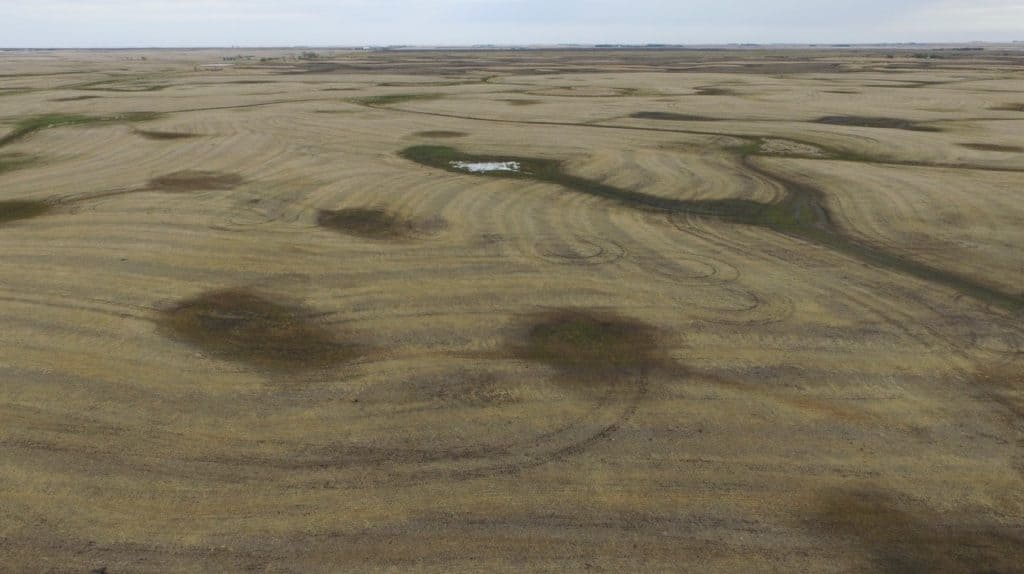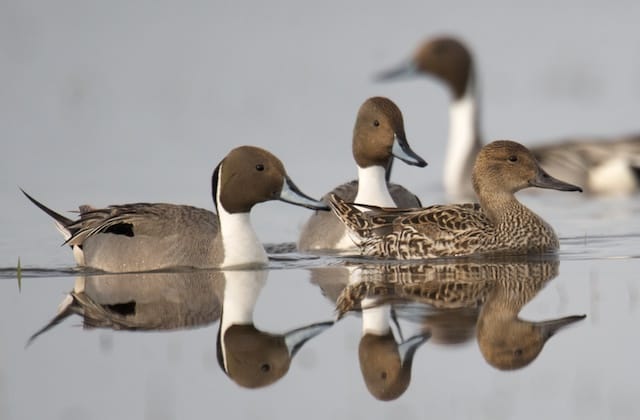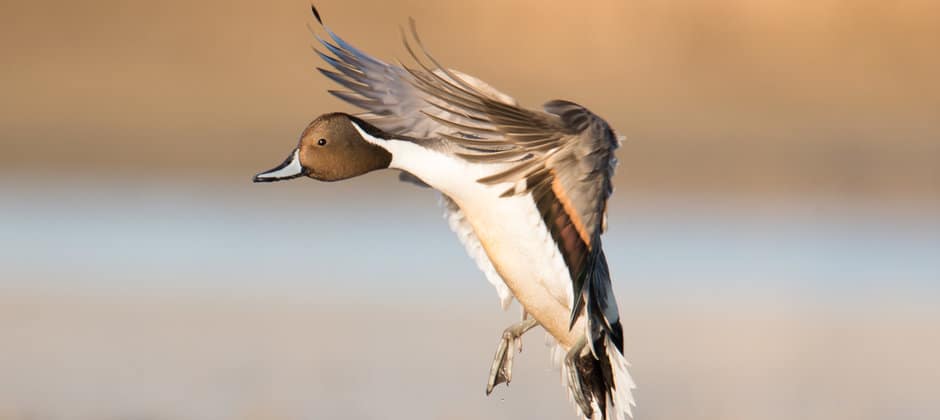Share this article
Prairie Pothole farming hampers pintail duck success
From a bird’s eye view, a small pond in a mowed field may appear to be the perfect place to settle down and build a nest.
The trouble for pintail ducks is their spring migration brings them to the Prairie Pothole region just before the agricultural season picks up. Soon, growing crops will hide predators and mechanical tilling and pond drainage can reshape the landscape that drew them, creating an ecological trap for the waterfowl.
“Shortly before, it looked like good habitat,” said Frances Buderman, an assistant professor of ecosystem management at the Pennsylvania State University and the lead author of a study published recently in the Journal of Animal Ecology analyzing the decline of the species.

The dark spots show where temporary ponds have been drained to create more space for crops in the Prairie Pothole region of Canada. Credit: Fred Greenslade-Delta Waterfowl
The breeding range of northern pintails (Anas acuta) stretches widely across Canada and the United States, including much of the Prairie Pothole states and provinces including Iowa, the Dakotas, Manitoba and Alberta.
While the waterfowl are widespread, their populations in the Prairie Pothole region never recovered after a drought in the 1980s, even while other dabbling duck species rebounded.
Previous research in individual areas has shown that pintail nests are sometimes destroyed when tilling season starts — often after pintails have already arrived. Pintails evolved to look for optimal nesting conditions in ponds surrounded with short grasses, giving them plenty of visibility for potential danger. But much of this native short grass has become heavily fragmented due to agriculture in the region.
In farming areas, the stubble left over from the previous year’s crops appears similar to wild systems to a duck, the new crops quickly grow much taller, giving coyotes (Canis latrans), raccoons (Procyon lotor) and especially foxes cover to sneak up on nests.
Buderman and her colleagues examined a long-term dataset of pintail counts across the region to see what was happening to the species.

Pintails may be more susceptible to problems associated with farming techniques as they are more reluctant than other dabbling duck species to re-nest. Credit: Fred Greenslade-Delta Waterfowl
They found that more pintails were around in the nesting period when there were more ponds on the landscape. But the study also found that mechanical tilling and predators contributed to declines in pintail numbers in the region.
The team also found that while other dabbling duck species in the area get around these problems by relocating their nests after early season failures, pintails are more stubborn.
“Pintail ducks are less likely to re-nest than other species,” Buderman said.
She said that better awareness by farmers and changes in farming practices may help pintail conservation in the Prairie Pothole region, but that can be tricky. Not leaving stubble overwinter, or earlier tilling, for instance, would likely reduce deaths associated with the equipment, but it might also remove the leftover stubble on the landscape, making it look less suitable to pintails for nesting areas.
While the researchers didn’t look at pond characteristics as they apply to pintail nesting locations, Buderman said the practice of draining several smaller ponds into one large pond to make it easier for farming equipment to navigate may also reduce the suitability of some areas as pintail nesting sites. Future research by nonprofit groups in the area is now looking at answering these questions.
Header Image:
Pintail ducks are declining across the Prairie Pothole region of the U.S. and Canada.
Credit: Fred Greenslade-Delta Waterfowl








